Saxony threw me for a complete loop. Walking through Dresden’s old town at sunset, watching the light dance off the restored Frauenkirche’s golden dome, I couldn’t believe this was the same city I’d seen in World War II history books. And when I first laid eyes on the Bastei Bridge, with its sandstone towers rising straight out of the morning mist above the Elbe River, I had to remind myself this wasn’t some fantasy movie set.
From the snowcapped peaks of the Zittau Mountains to the fairy tale halls of Moritzburg Castle, these are the most beautiful places in Saxony that’ll make you rethink everything you knew about eastern Germany. Let me share my favorite spots in this incredible region where every view feels like it belongs on a Christmas card!
Must-See Attractions in Saxony
Visiting Saxony? Spend the day exploring the historic charm of Bautzen, admire the stunning architecture in Dresden, or wander through the medieval streets of Freiberg. Discover the picturesque beauty of Görlitz, take in the fairytale-like scenery at Kromlau Park & Rakotzbrücke (Devil’s Bridge), or enjoy local Saxon cuisine at a traditional restaurant. Whether you’re into history, outdoor adventures, or architectural wonders, Saxony has plenty to offer!

1. Bautzen
- 📍 Location: Eastern Saxony, 45 minutes east of Dresden near the Czech border
- 🏆 Best For: Medieval architecture enthusiasts 🏰, cultural explorers 🎭, dual-language learners 🗣️
- 📸 Top Experiences: Exploring the hilltop Burgruine (castle ruins), walking the medieval city walls, discovering Sorbian culture
- 📅 Best Time to Visit: May-September for warm weather and outdoor festivals, December for magical Christmas markets ❄️
- 🏨 Where to Stay: Best Western Plus Hotel Bautzen – A modern hotel nestled in the heart of Bautzen’s medieval old town, offering scenic views, regional cuisine, and convenient access to historic landmarks
A hilltop medieval city where two languages dance in everyday conversation, Bautzen perfectly preserves its thousand-year-old charm. The “City of a Thousand Stairs” got its nickname for good reason, with endless stone steps connecting different elevation levels throughout this ancient settlement.
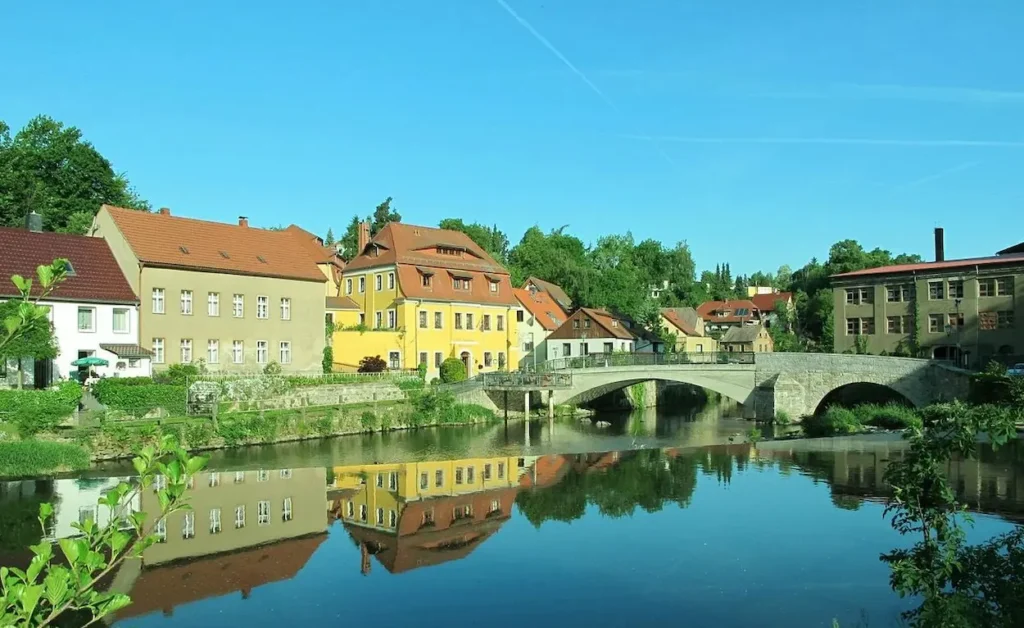
The Burgruine castle ruins crown the highest point, offering spectacular sunset views over terracotta rooftops and the Spree River valley. Street signs appear in both German and Sorbian, reflecting the city’s role as unofficial capital of Germany’s Sorbian minority culture.
I always start by climbing the Old Waterworks Tower for orientation, then spend hours wandering cobblestone streets lined with Gothic churches and Renaissance buildings. The compact city center makes exploration easy, though those famous stairs will give your legs a workout by day’s end.

2. Dresden
- 📍 Location: Eastern Germany, 2 hours south of Berlin along the Elbe River
- 🏆 Best For: Art lovers 🎨, baroque architecture admirers 🏛️, history buffs 📚
- 📸 Top Experiences: Viewing masterpieces in the Zwinger Palace, exploring the rebuilt Frauenkirche, strolling the Elbe riverfront
- 📅 Best Time to Visit: April-October for pleasant weather and outdoor activities, November-December for legendary Christmas markets 🎄
- 🏨 Where to Stay: Hotel Taschenbergpalais Kempinski – Luxurious palace hotel with views of major attractions
The “Florence on the Elbe” rose from wartime ashes to reclaim its crown as one of Europe’s most dazzling cultural capitals. Inside the Zwinger Palace, world-class collections include priceless porcelain and old master paintings that rival any major museum.
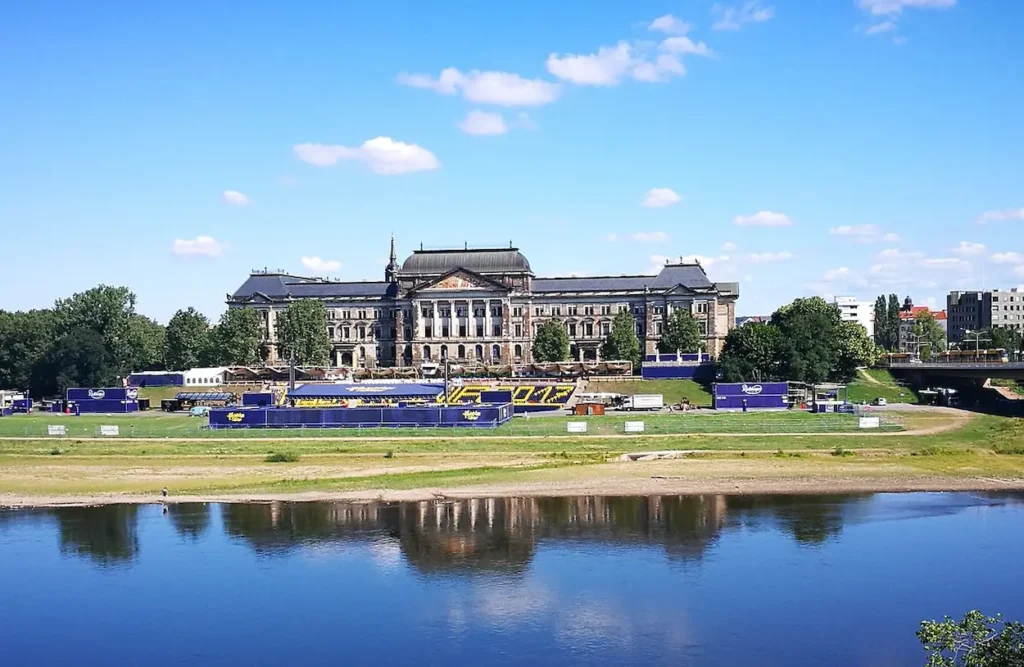
The Frauenkirche tells a powerful story through its restored architecture, mixing original darkened stone with bright new materials. From its dome, panoramic views reveal the baroque splendor spreading along both sides of the peaceful Elbe River.
When museum fatigue sets in, the Großer Garten offers respite with its baroque landscaping and shaded walkways. Evening transforms the Neustadt district into a buzzing nightlife hub where trendy bars and galleries balance Dresden’s classical elegance.

3. Freiberg
- 📍 Location: Central Saxony, 30 minutes southwest of Dresden in the Ore Mountains foothills
- 🏆 Best For: Mining history enthusiasts ⛑️, university town vibes 🎓, Gothic architecture lovers 🏰
- 📸 Top Experiences: Touring UNESCO-listed silver mines, exploring the historic market square, visiting the medieval cathedral
- 📅 Best Time to Visit: June-September for underground mine tours (year-round 10°C), December for the traditional miners’ Christmas celebrations ⭐
- 🏨 Where to Stay: Best Western Hotel Alexa – Modern comfort near the historic center
Silver made this city, and you can still trace its underground fortune through UNESCO World Heritage mine tunnels. The “Reiche Zeche” mine tour descends deep into authentic medieval mining chambers where precious metal once flowed.
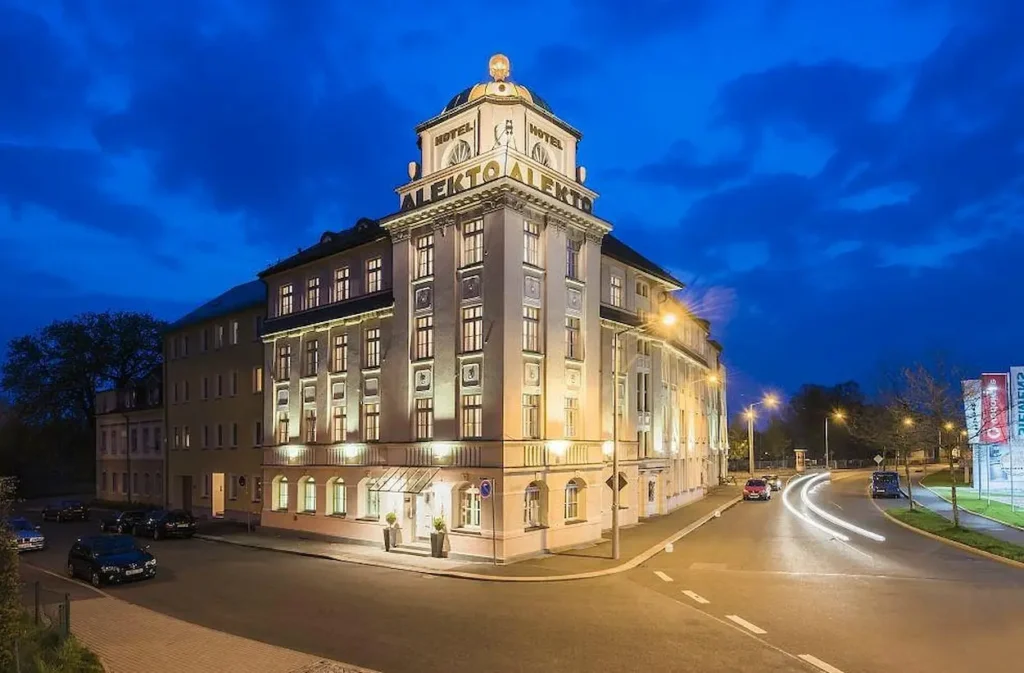
Above ground, St. Mary’s Cathedral dominates the perfectly preserved medieval center with its late Gothic architecture and the world’s oldest positive organ. The bustling market square retains its Renaissance character, surrounded by wealthy merchants’ houses.
Germany’s oldest technical university keeps student energy pulsing through traditional streets, creating an interesting dynamic between old and new. The Stadt- und Bergbaumuseum fills in mining details, while a short walk to Jakobikirche rewards with elevated views over Freiberg‘s signature red rooftops.

4. Görlitz
- 📍 Location: Far eastern Saxony, right on the Polish border where it becomes Zgorzelec
- 🏆 Best For: Film buffs 🎬, architecture enthusiasts 🏛️, border crossers 🚶♀️
- 📸 Top Experiences: Discovering movie filming locations, walking across the Neisse River to Poland, exploring the perfectly preserved old town
- 📅 Best Time to Visit: May-September for cross-border festivals and warm weather, December for two Christmas markets on either side of the river 🎅
- 🏨 Where to Stay: Parkhotel Görlitz – A 4-star superior hotel nestled beside the River Neisse and Görlitz’s city park, offering modern rooms, a tranquil garden, and proximity to the historic town center
Film crews flock to this architectural treasure where 500 years of European styles survived WWII intact. “Görliwood” has appeared as everything from Paris to Budapest on screen, most famously in “The Grand Budapest Hotel.”
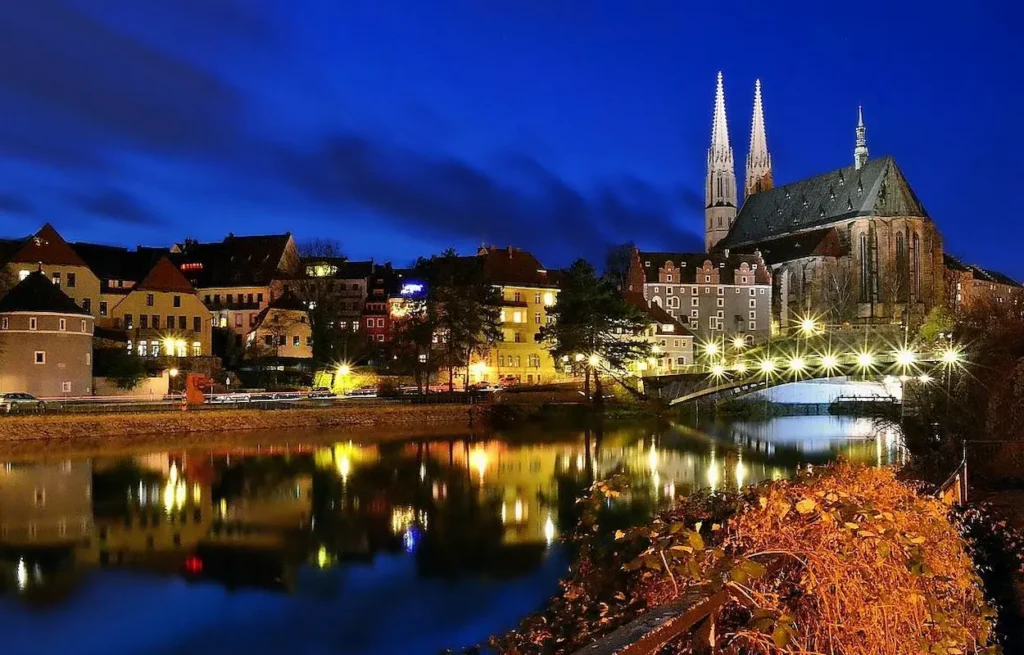
The Stadtbrücke creates a unique cross-border experience, letting you have breakfast in Germany and lunch in Poland within minutes. Both sides coordinate festivals and cultural events, treating the divided city as one cultural space.
Untermarkt showcases some of Europe’s finest Renaissance architecture, while the Reichenbacher Turm provides eagle-eye views. The Silesian Museum explains the region’s complex history, and Landskron brewery pours local beer traditions that taste even better after a day exploring both sides of Görlitz‘s divided charm.

5. Kromlau Park & Rakotzbrücke (Devil’s Bridge)
- 📍 Location: Southeastern Saxony, 1.5 hours east of Dresden near the village of Kromlau
- 🏆 Best For: Photographers 📸, nature lovers 🌳, Instagram enthusiasts 📱
- 📸 Top Experiences: Capturing the perfect circular reflection in Rakotzsee lake, exploring the romantic landscape park, discovering hidden grottoes
- 📅 Best Time to Visit: Early morning for misty atmospheric shots, autumn for golden foliage, spring for rhododendron blooms 🌺
- 🏨 Where to Stay: Hotel Kristall – Charming retreat in Saxony offering cozy rooms, stunning views, and easy access to local attractions
Victorian engineering meets optical illusion at this impossibly thin stone arch that mirrors perfectly in still water. The 1860s Rakotzbrücke forms a complete circle with its reflection, earning the nickname “Devil’s Bridge” for its seemingly supernatural precision.

Within Kromlau Park, 200 acres of romantic English landscaping hide artificial ruins, mysterious grottoes, and aged rhododendron groves. The Basalt Lake and remnant castle ruins create a fairy-tale atmosphere throughout the grounds.
Peak photography happens at dawn when mist rises from the lake and crowds haven’t arrived yet. The Rhododendron Sea explodes with color during spring blooms, making the annual May festival particularly spectacular for nature lovers seeking something beyond the famous Devil’s Bridge.

6. Leipzig
- 📍 Location: Central Germany, 1.5 hours southwest of Berlin in Saxony
- 🏆 Best For: Music lovers 🎼, revolution history enthusiasts ✊, cafe culture connoisseurs ☕
- 📸 Top Experiences: Following the Peaceful Revolution trail, attending St. Thomas Church concerts, exploring cool neighborhood districts
- 📅 Best Time to Visit: Year-round for classical music (Monday night peace prayers continue), September-October for mild weather and anniversary celebrations 🕊️
- 🏨 Where to Stay: Steigenberger Icon Grandhotel – Historic elegance right in the city center
Revolutionary fervor shaped this city, where Monday peace prayers at St. Nicholas Church toppled an entire government in 1989. These weekly protests continue today, maintaining the world’s longest-running demonstration tradition.
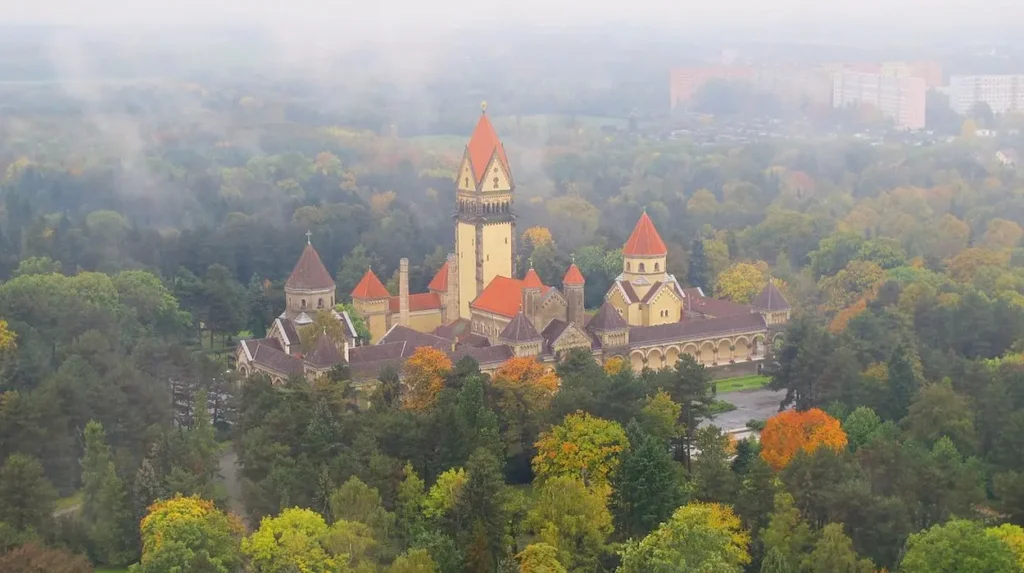
Musical greatness runs deep here, from Bach’s 27-year residency to the current St. Thomas Church Boys Choir and Gewandhaus Orchestra. The Leipzig Opera premieres works that still make international headlines.
When classical music needs a break, head to Südvorstadt for student-packed bars and cafes or Plagwitz, where converted factories house galleries and craft breweries. I never miss Auerbachs Keller, where Goethe’s intellectual debates continue over traditional Saxon cuisine, and the Monument to the Battle of the Nations towers as Eastern Germany’s biggest monument in Leipzig.

7. Meissen
- 📍 Location: Saxony, Germany – 25km northwest of Dresden along the Elbe River
- 🏆 Best For: History enthusiasts 🏛️, art lovers 🎨, porcelain collectors 🏺
- 📸 Top Experiences: Touring Meissen Porcelain Manufactory, exploring Albrechtsburg Castle, wandering cobblestone Old Town
- 📅 Best Time to Visit: May-September for warm weather and open attractions, December for magical Christmas markets ❄️
- 🏨 Where to Stay: Hotel Ross Meissen – Historic riverside hotel in charming Old Town
Since 1710, Meissen has defined elegance with its world-famous porcelain, earning the title “cradle of European porcelain.” Master craftsmen still hand-paint delicate pieces using secret formulas passed down through generations. The Meissen Porcelain Manufactory offers factory tours where visitors witness this meticulous artistry.
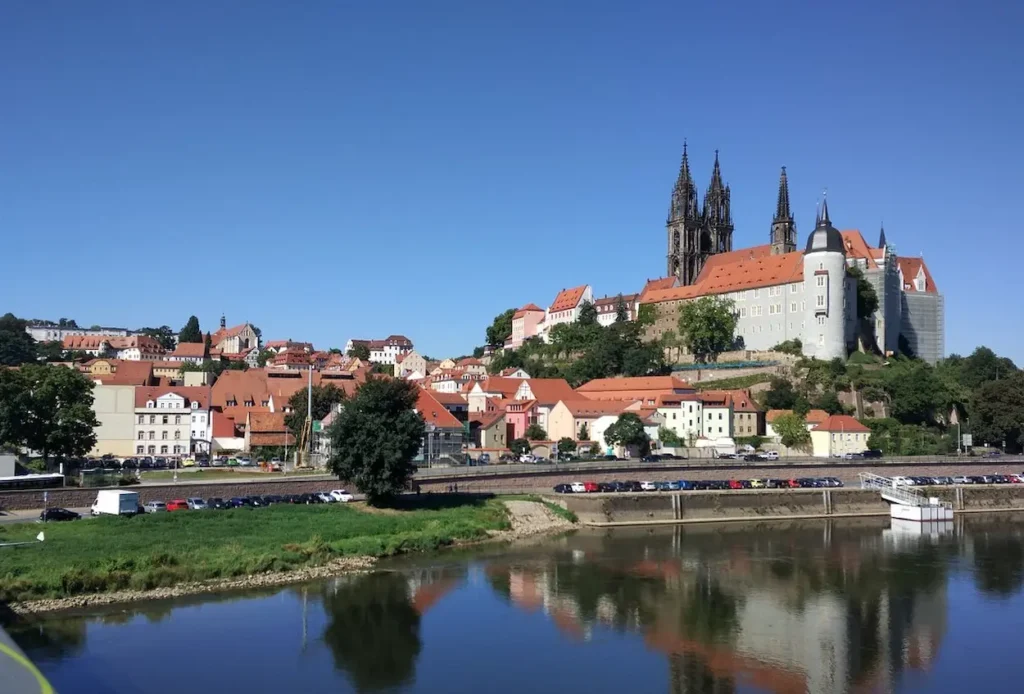
High above the city, Albrechtsburg Castle stands as Germany’s oldest castle, built in 1471. This Gothic masterpiece provides sweeping views of the Elbe Valley and houses impressive medieval architecture. The cobblestone Old Town below charms visitors with colorful Renaissance buildings and traditional Saxon restaurants.
Walking through these historic streets, you’ll find the stunning Frauenkirche with its late Gothic interiors. This medieval church showcases remarkable craftsmanship that rivals the city’s famous porcelain. Meissen proves that centuries-old traditions continue thriving in modern Germany.

8. Moritzburg Castle and Lighthouse
- 📍 Location: Moritzburg, Saxony – 14km northwest of Dresden near Radebeul
- 🏆 Best For: Castle enthusiasts 🏰, nature lovers 🦢, photographers 📸
- 📸 Top Experiences: Exploring lavish Baroque palace, discovering whimsical lighthouse, visiting miniature castle
- 📅 Best Time to Visit: June-September for full access, November-March for winter scenery ❄️
- 🏨 Where to Stay: Rittergut Positz – Historic manor house hotel with period charm
Moritzburg Castle rises like a golden fantasy from artificial Castle Lake, its bright yellow facade reflecting in mirror-like waters. Built as a hunting lodge for Saxon royalty, this Baroque masterpiece houses Europe’s finest collection of mounted trophy deer and historic weapons. Inside, lavishly decorated rooms showcase gilded furniture and intricate tapestries.
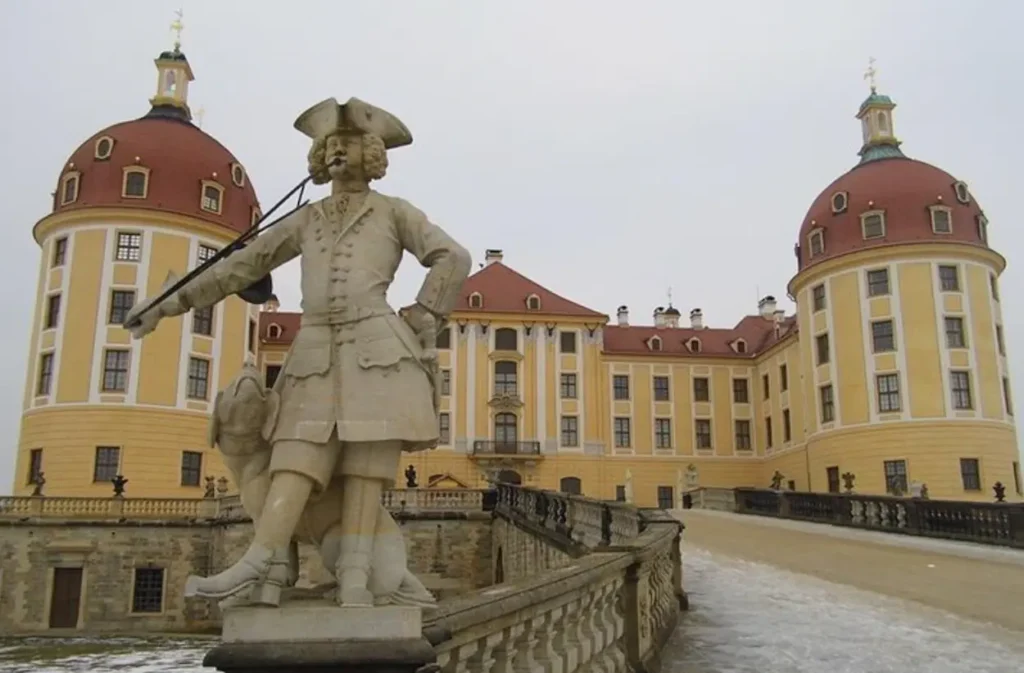
The grounds hold surprises beyond the main palace. The playful Moritzburg Lighthouse served as a folly for staged naval battles, while the tiny Little Pheasant Castle hosted elaborate royal dining parties. Both structures add whimsical touches to these manicured gardens and ancient oak groves.
Winter transforms the scene completely when frozen waters become an ice skating rink with the illuminated castle glowing like a jewel. This storybook setting inspired Disney animators and continues enchanting modern visitors. I always recommend visiting during different seasons to experience both winter magic and summer splendor at Moritzburg Castle and Lighthouse.

9. Muskauer Park
- 📍 Location: German-Polish border, 150km east of Dresden, spanning Bad Muskau and Łęknica
- 🏆 Best For: Garden enthusiasts 🌳, landscape photographers 📸, international explorers 🚶♀️
- 📸 Top Experiences: Crossing international Neisse Bridge, exploring English gardens, touring restored palace ruins
- 📅 Best Time to Visit: April-May for spring blooms, September-October for autumn colors 🍂
- 🏨 Where to Stay: Hotel Park Residenz – UNESCO heritage villa inside the park
The world’s largest English landscape park spans two nations, creating an 830-hectare masterpiece where borders dissolve seamlessly. Prince Hermann von Pückler-Muskau designed Muskauer Park in the 1800s using his revolutionary “invisible hand” approach. His vision created seemingly natural landscapes requiring decades of careful planning.
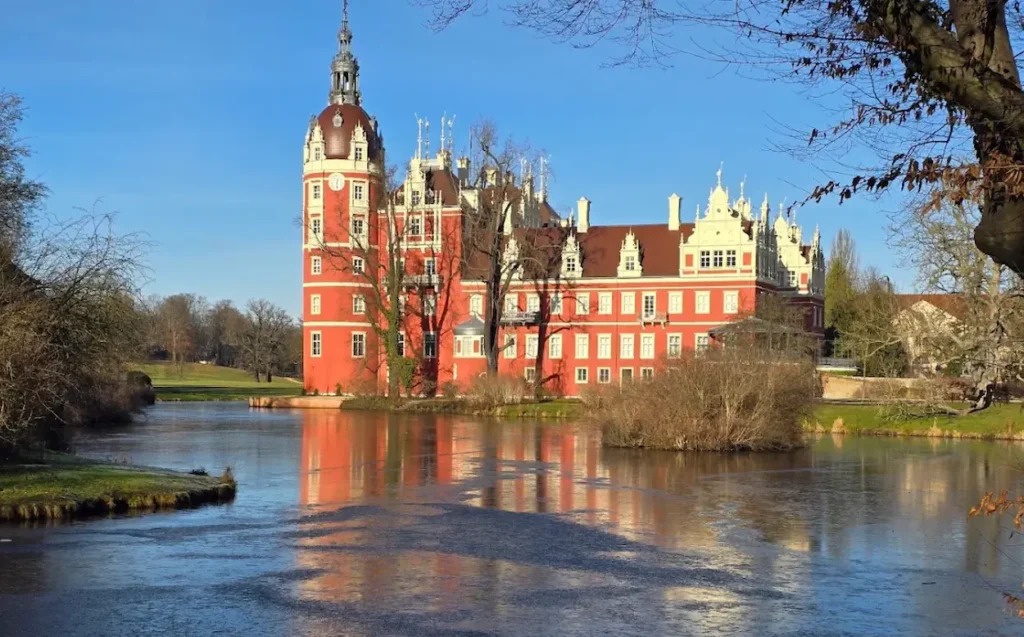
Winding paths guide visitors through dramatic forest groves, past serene lakes, and across rolling meadows. The mountain park features artificial hills and valleys framing perfect views at every turn. Seasonal changes bring constant transformation, from spring wildflowers to vibrant autumn foliage.
The iconic Neisse Bridge marks the international boundary, allowing visitors to stand in two countries simultaneously. Above, the restored New Palace ruins offer climbing opportunities to a tower with sweeping cross-border vistas. No passport needed for this unique garden adventure bridging nations at Muskauer Park.

10. Saxon Switzerland National Park
- 📍 Location: Eastern Saxony, 40km southeast of Dresden along Czech border and Elbe River
- 🏆 Best For: Hikers 🥾, rock climbers 🧗♀️, nature photographers 📸
- 📸 Top Experiences: Crossing famous Bastei Bridge, exploring Elbe gorges by boat, summiting Lilienstein peak
- 📅 Best Time to Visit: May-June for hiking and wildflowers, September-October for fall colors 🍂
- 🏨 Where to Stay: Elbhotel Bad Schandau – Riverside spa hotel with direct trail access
Towering sandstone pillars and misty gorges create landscapes so dramatic, early travelers named this region after Switzerland. The Elbe River spent millions of years carving this otherworldly terrain of jagged cliffs and bizarre rock formations. Artists and poets of the Romantic movement found endless inspiration among these natural monuments.
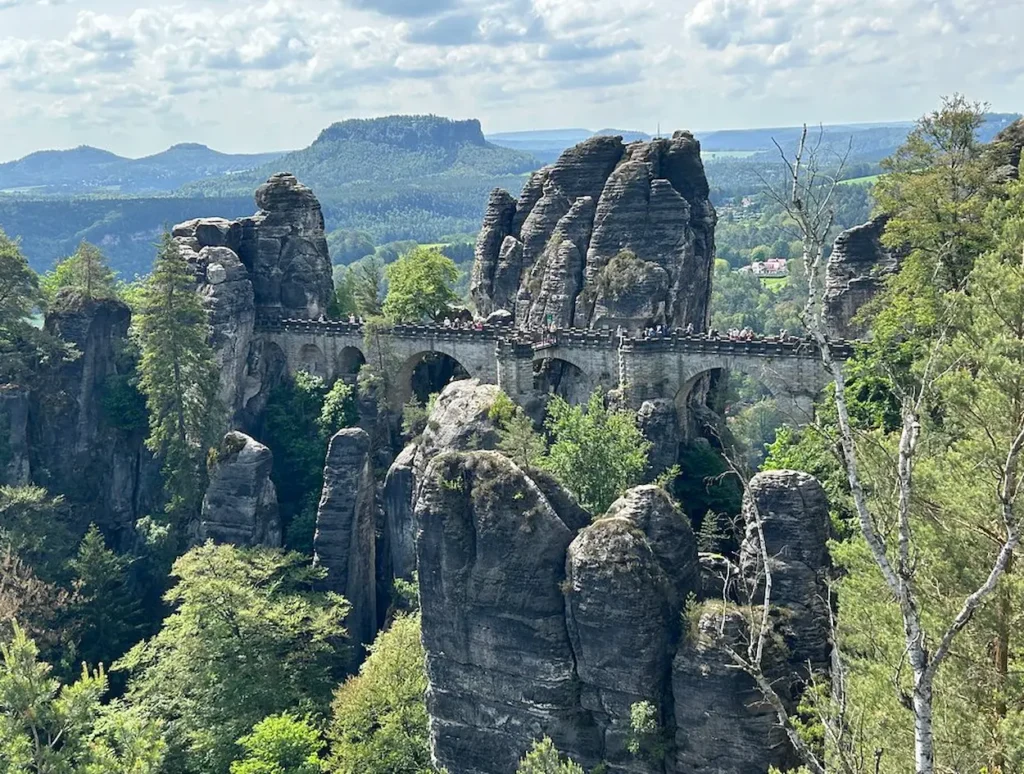
Bastei Bridge spans a 200-foot chasm between rock spires, providing dizzying views into the Elbe Valley 600 feet below. This 19th-century engineering feat leads to the ruins of Neurathen Castle, precariously perched on sandstone pinnacles. For spectacular panoramas, climb Lilienstein, the park’s only right-bank mountain offering 360-degree vistas.
Over 700 climbing routes challenge adventurers on the park’s sandstone towers, while 400km of hiking trails snake through hidden valleys and ancient forests. Boat tours through the Elbe The The Sandstone Mountains provide unique perspectives from water level, complete with tales of medieval robber barons who once terrorized these remote heights at Saxon Switzerland National Park.

11. The Ore Mountains
- 📍 Location: Southern Saxony along Czech border, 130km south of Dresden
- 🏆 Best For: Ski enthusiasts ⛷️, Christmas market lovers 🎄, mining heritage buffs ⛏️
- 📸 Top Experiences: Skiing Fichtelberg slopes, riding historic steam trains, browsing authentic Christmas markets
- 📅 Best Time to Visit: December for world-class Christmas markets, January-February for skiing ☀️
- 🏨 Where to Stay: Hotel Alt-Annaberg – Charming 16th-century guesthouse in Annaberg-Buchholz, offering cozy suites with kitchenettes, a tranquil garden, and personalized service by owner Susan Förster-Haas
Germany’s Christmas capital transforms into a winter wonderland where centuries-old traditions blend with modern skiing adventures. Fichtelberg, Saxony’s highest peak at 1,215 meters, offers 15km of diverse slopes for all skill levels. The historic cable car whisks visitors to the summit for panoramic views stretching into the Czech Republic.

Steam locomotives still chug along the Fichtelberg Railway, a narrow-gauge line operating since 1897. This nostalgic journey climbs through pristine valleys to mountain villages where time seems frozen. Traditional crafts flourish throughout the region, with Seiffen producing the world’s finest wooden Christmas ornaments year-round.
December brings magical Christmas markets to every town square, where artisans sell hand-carved nutcrackers and smoking men. The region’s 800-year mining heritage lives on through attractions like Frohnauer Hammer and underground tours of the Markus Röhling Shaft. Rich history meets festive traditions in this mountain playground known as The Ore Mountains.

12. Zittau Mountains
- 📍 Location: Far southeastern Saxony, 150km southeast of Dresden at German-Czech-Polish tri-border
- 🏆 Best For: Mountain hikers 🥾, geological explorers 🔍, tri-nation adventurers 🗺️
- 📸 Top Experiences: Exploring Oybin Castle ruins, riding Zittau steam railway, standing at tri-border point
- 📅 Best Time to Visit: April-June for spring hiking, September-October for peak colors 🌄
- 🏨 Where to Stay: Hotel Oybiner Hof – Traditional mountain lodge near castle ruins
Germany’s smallest mountain range delivers outsized drama with volcanic peaks, medieval ruins, and the thrill of visiting three countries in one hike. Oybin Castle crowns a dramatic volcanic plug, reached by steep trails rewarding climbers with sweeping tri-border views. The Zittau narrow-gauge railway whisks passengers through pristine valleys aboard authentic steam trains.
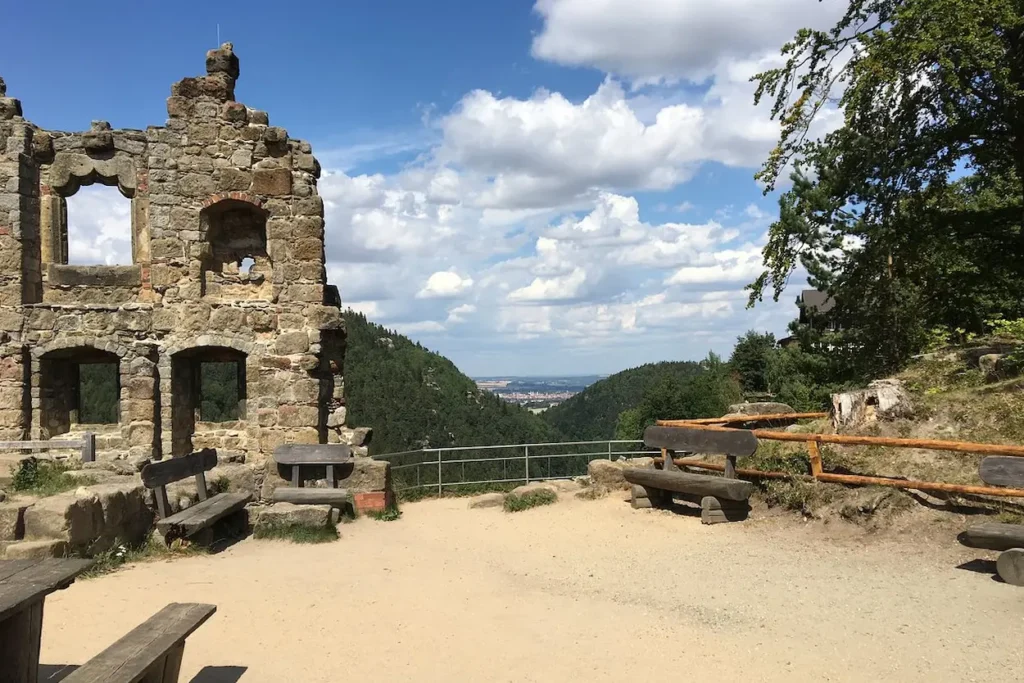
History buffs find treasures throughout the region, from healing springs at Jonsdorf spa town to the distinctive Nonnenfelsen rock formation. The Dreiländereck marks where Germany, the Czech Republic, and Poland meet at a single stone marker. Border crossings require nothing more than walking between countries.
Traditional industries shaped these valleys for centuries, particularly textile weaving that rivaled European capitals. The Großschönau museum showcases this damask heritage through working demonstrations and historical displays. Despite modest elevations, these mountains offer some of Saxony’s most spectacular views and unique geographic experiences in the Zittau Mountains.






